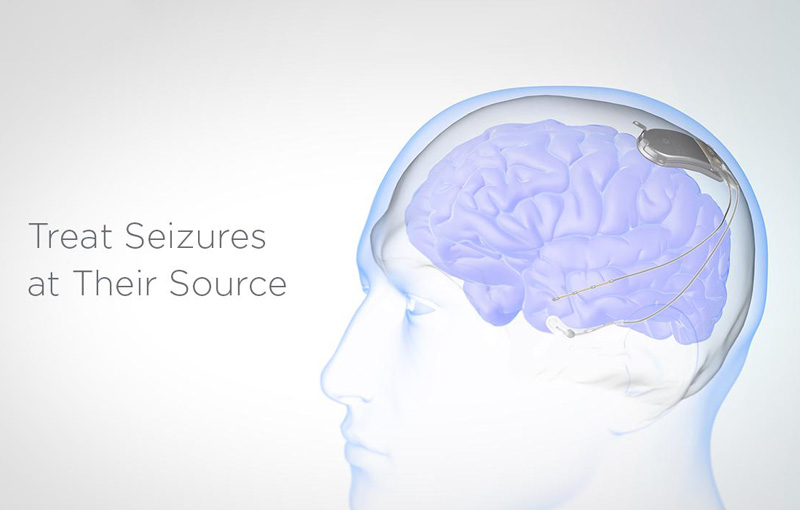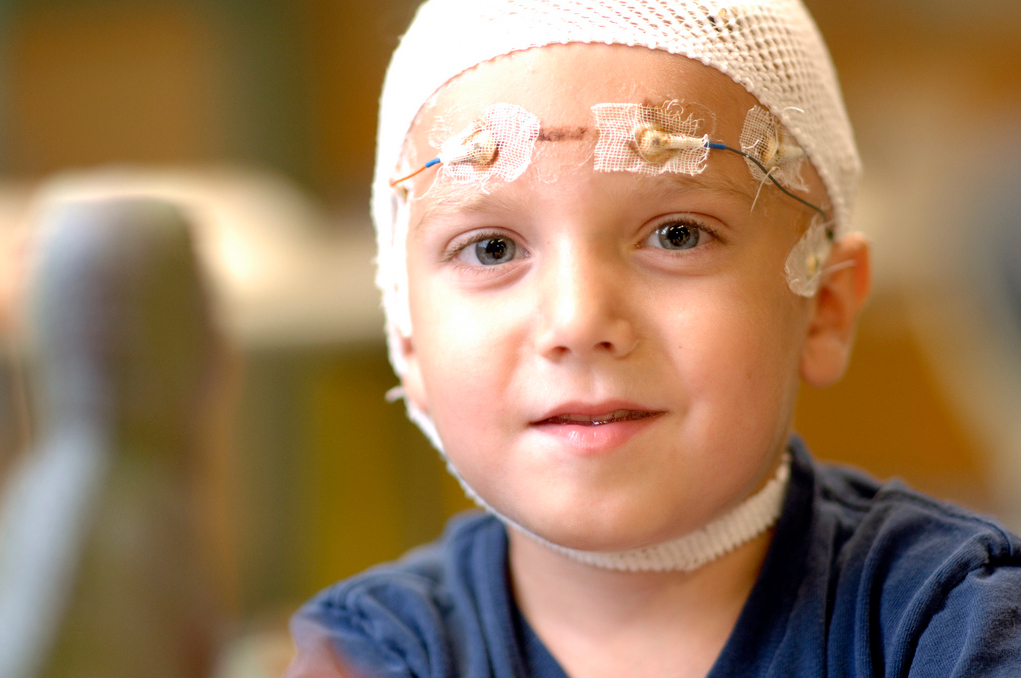Responsive Neurostimulation (RNS®)

RNS® was approved in 2013 for adults (18y or older) with refractory focal (partial) epilepsy. The device works differently from the other two devices (VNS, DBS) used in treatment of epilepsy. RNS is a ‘closed loop’ device. That means it is activated when it identifies seizures (by reading brain electrical activity) and then tries to stop the seizure by electrically stimulating the brain.
How it Works
Electrodes are placed in or on the surface of the brain. This involves brain surgery-a piece of skull is opened to place these electrodes. A very small computer system, which is attached to the electrodes, is placed into the skull. Imagine this- the electrodes are placed directly over the part of the brain where seizures are coming from. When a patient has a seizure, the electrodes can detect this activity. The electrodes are then programmed to delivery electricity to the brain. The electricity from the electrodes zaps the brain—and the seizure activity may be stopped!
After the surgery, the device is allowed to record the brain’s electrical activity for next few weeks. During this time the patient regularly downloads the data (at least on a daily basis) for analysis by the doctor at a later date. Once enough data has been collected, the computer can be trained to continuously monitor brain’s electrical activity, detect seizures, and then zap the seizures with electrical current to stop them.
In clinical trial patients reported average nearly 40% reduction in seizures after 3 months of device activation. At 2 years the average reduction in seizures had increased to nearly 50% and slightly more than half of the patients reported reduction of seizures by half or more. By the 6th year, average seizure reduction reached nearly 65% with nearly 60% of patients reporting seizure reduction by half or more. Patients also reported improved quality of life outcomes on long term follow-up.

Surgery related complications including infection, bleeding in to the brain may occur in small number of patients. Typically patients do not report sensations with stimulation, but if present they may be minimized by picking a slightly different area of stimulation.
Geller EB. Responsive neurostimulation: Review of clinical trials and insights into focal epilepsy. Epilepsy Behav. 2018 Nov;88S:11-20.
Sun FT, Morrell MJ. The RNS System: responsive cortical stimulation for the treatment of refractory partial epilepsy. Expert Rev Med Devices. 2014 Nov;11(6):563-72.
